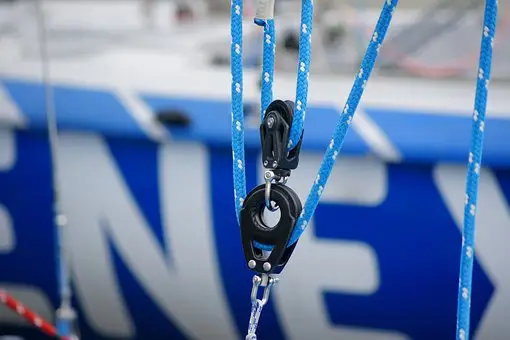Here is everything you need to know about rigging ropes and for your safety and those of others.
The construction of the rope and the actual force it can withstand are given little consideration. Frequently, I have witnessed ropes being overused without regard for the structural damage caused to the rope. Even if a rope has not yet snapped, it does not guarantee it is still safe to use.
The presence of hard parts in a rope’s core may indicate a melted core with no or very little remaining strength. Glazing of the mantel of the rope indicates structural damage to the outer fibers; therefore, selecting the proper rigging rope for the task is essential to prevent rope damage. Single-braid constructions or outdated climbing lines are utilized most frequently for light rigging.
The issue with outdated climbing lines in rigging is:
- The force exerted on a rope while rigging is significantly greater than when climbing.
- Typically, climbing ropes have a low strength-to-weight ratio.
- There is a strong possibility that we have confused the climbing ropes with rigging ropes.
The construction of single-braid rope is suitable for lightweight rigging. The greater the number of strands weaved into the rope, the less stretch it will have. Hence a 3-strand single-braid will have greater stretch than a 12-strand single-braid.
The single-braid rope can be used for both natural crotch rigging and technological rigging. I use the term technical rigging when friction devices and pulleys are employed. A single-braid rope will always require a larger diameter than a double-braid rope to have the same strength.
Double-braid construction: The double-braid structure is a stronger rope structure jib sheet, and when examining heavy rigging, the double-braid construction is frequently used. This double-braid structure distributes the load between the core and the mantel, producing a stronger rope.
The single disadvantage of a Double Braid Polyester Rope is that it cannot be utilized for natural crotch rigging. When running a double-braid over a branch, friction slows the movement of the mantel while the load pulls on the rope’s core.
This uneven rope loading alters its characteristics and might cause harm. Double-braid configurations depend on the rope’s core to carry the entire load.
This is typically done to prevent abrasion or damage to the interior weight-bearing fibers. Because it is more difficult to inspect these ropes for deterioration to the load-bearing portion, arboriculture has limited usage for them.
Single-hollow-braid rope constructions: Single-hollow-braid rigging ropes are robust, lightweight ropes braided with a hollow core. This design makes them ideal for simple splicing, and making rope tools is simple.
Under load, single-hollow-braid ropes flatten, which might malfunction when using friction or lifting devices such as a bollard, porter wrap, or winch. This flattening can also result in rope damage when passing through a pulley. The single-hollow braid can be utilized as taglines, guylines, and rope tools.
Conclusion!
To work safely and maximize the use of a rope, it is necessary to tie the proper knot and utilize a rope with the appropriate load. All ropes are safe and secure when used correctly, but the user must understand the shortcomings of every rope. RW Rope is the perfect place for all your rope needs!
LATEST ARTICLES:
– What is Important in a Sports Watch?
– Angela Lee Lifestyle and Net Worth
– How to Craft a Small Business Content Marketing Strategy
– 5 Dos and 5 Don’ts of crypto trading
– 10 facts about Silk Sonic rapper Anderson .Paak wife Jae Lin.


